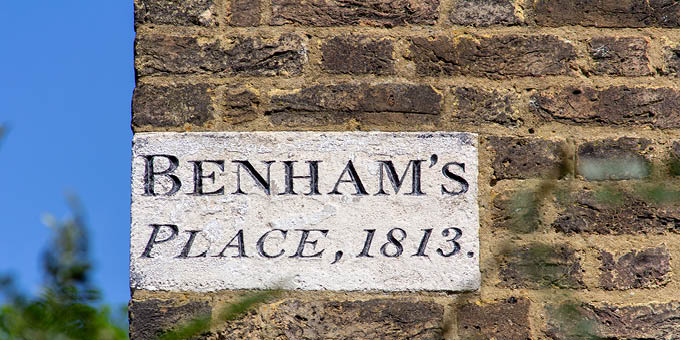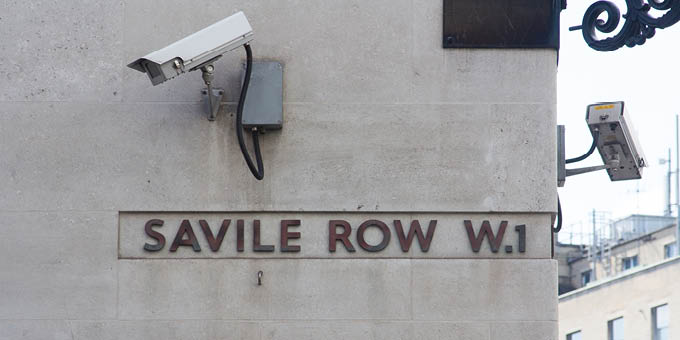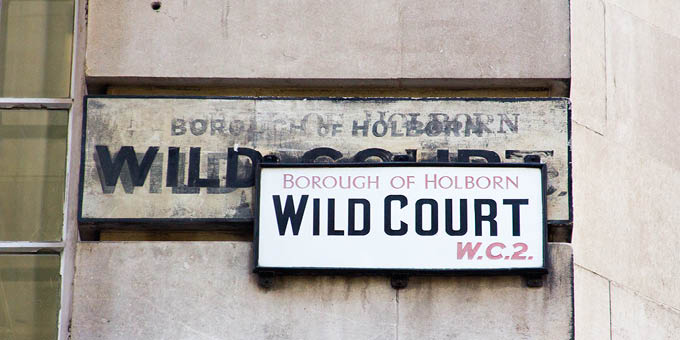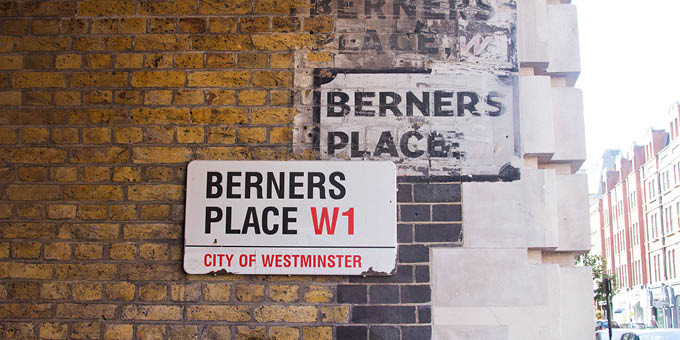The city’s street signs reveal more than just location, they unlock a place and time in London history, writes Oonagh Turner
Look beyond the London street sign’s most basic function as an anchoring piece of urban furniture, and you might find a slice of typographical history. To graphic designer, Alistair Hall, these nameplates are far from the everyday, they hold the key to our city’s ever-changing story, whether it’s tales of the postal districts introduced in the midst of the First World War to help the female workforce, or evidence of the reduction of enamel use during the Second World War. For the past four years, Hall has been scouring the streets for the most beautiful, curious, oldest and ornate nameplates to prove their historical significance and relevance to today.

“Street signs are not showy and really their first priority is as points of information,” says Hall, “but they have a design and manufacturing history attached to them.” Hall embarked on this mission after studying at Central Saint Martins instilled in him an enthusiasm for lettering. Working as a graphic designer in historic Holborn spurred him on in his quest. “I very quickly had a list of about 50 signs to investigate and it blossomed from there.”

A life of research
Hall’s research has traced street signs all the way back to before the 1666 Great Fire of London, when they were mainly used to facilitate mail delivery. The earliest example has taken him to Tavistock Street in Covent Garden in 1636, labelled by a tablet as ‘Yorke Street’ – the street’s name until 1937. The oldest tablet that Hall has found still correct to this day is on Great James Street in Holborn, dating from 1721.
His findings have revealed periods of street renaming across the arc of London’s history: “There were lots of King Streets, Queen Streets, Cross Streets, but it started to become confusing. The street where my studio is, is Saint Cross Street. There is no Saint Cross, it was just Cross Street until early 20th century. One of the easiest ways to deal with the renaming process was to put the word ‘Saint’ in front of it so the street was canonised.”

Forgotten postcodes
Hall has also identified street signs from corners of the capital that have faded from history altogether, the old northeast postal district being one example. Set up in 1856, the original postal districts were reassessed a decade on, and the NE district was deemed unnecessary. “There was this local discontent where people didn’t want to suddenly identify as eastenders,” Hall explains. “The NE street sign carried on being put up right through to 1917, and you can see these on buildings today. Now NE is used for Newcastle.”
Hall’s perspective as a graphic designer means his interest lies first and foremost with the typography. “In terms of my favourites, there are the milk glass name plates in Holborn – the old Metropolitan borough – those are stunning. The old tiled signs of Soho and Hampstead are beautiful, and I think the old blue enamel name plates you see dotted around are fantastic.”

The variety of designs scattered across London is evidence of economic disparity, says Hall. “Different signs were considered suitable for different areas. So you’d use a nice serif font on a good sign in an affluent area, then in a working class area you’d find a cheaper sign. I think it really should be standard throughout.”
Signs can also benefit the environment they sit within. “It doesn’t take much to make a much better sign which can create a sense of local pride,” Hall explains. “There is a lovely thing they’ve done in Lambeth where all the signs are set in Albertus – a type created by a local designer who used to teach at the Guild School in Kennington Park. That sense of civic pride is incredibly important.”
Read more from The London Hub:
- My First London Home: Raymond Blanc OBE
- Swinging London: Chelsea residents remember the King’s Road in the 60s
- Finding Neverland: The London home that inspired JM Barrie to write Peter Pan is for sale
Follow The London Magazine on Instagram to stay up to date with recent features and exciting announcements. For more London stories, click through to our London hub here






 © 2024
© 2024